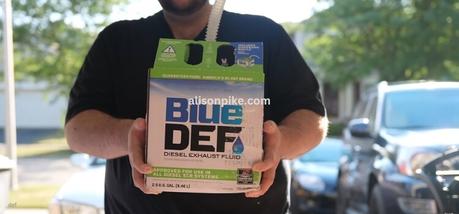As an Amazon Associate, I earn from qualifying purchases.

Discover the benefits of mixing DEF with fertilizer for healthier crops. Follow our guide for optimal application rates and improved agricultural productivity.
In the realm of modern agriculture, the proper use of diesel exhaust fluid (DEF) in fertilizer mixing has emerged as a crucial technique for enhancing crop yield and promoting sustainable farming practices. Understanding the intricacies of DEF and its integration into fertilizer blends is essential for farmers aiming to optimize their agricultural output.
In this comprehensive guide, we delve into the nuances of mixing DEF for fertilizer and provide practical insights to help you maximize your crop productivity.
Before delving into the specifics of mixing DEF for fertilizer, it's imperative to grasp the fundamentals of this essential solution.DEF is a colorless, non-flammable, odorless liquid containing 32.5 % urea and 67.5 % deionized water.
It serves a critical role in Selective Catalytic Reduction (SCR) systems utilized in modern diesel engines to reduce nitrogen oxide emissions, thereby mitigating environmental impact.
The integration of DEF into fertilizer formulations offers several notable benefits for agricultural practices. When combined with urea, DEF acts as a potent nitrogen source, facilitating efficient nutrient absorption by crops.
Additionally, DEF aids in regulating soil pH levels, thereby optimizing nutrient availability and fostering robust plant growth. By incorporating DEF into fertilizer blends, farmers can enhance crop quality, increase yields, and promote environmental sustainability.

Achieving the correct dilution ratio is paramount when mixing DEF for fertilizer. The ideal ratio typically ranges between 2-5% DEF to urea by weight, depending on specific crop requirements and soil conditions.
Diluting DEF beyond recommended levels may result in nutrient imbalance and hinder crop growth, underscoring the importance of precise measurement and adherence to established guidelines.
It's essential to assess the compatibility of DEF with other nutrients present in the fertilizer blend. Certain additives or compounds may interact adversely with DEF, compromising its efficacy and potentially harming crop health.
Conducting compatibility tests and consulting agricultural experts can help mitigate the risk of chemical reactions and ensure optimal nutrient delivery to crops.
Selecting the appropriate application method is crucial for effective DEF incorporation into fertilizer mixes. Common methods include pre-blend, in-line injection, and post-blend techniques, each offering distinct advantages in terms of efficiency and uniformity.
By choosing the most suitable application method based on equipment availability and farm infrastructure, farmers can maximize the effectiveness of DEF utilization and optimize crop nutrient uptake.
Environmental stewardship should guide the responsible use of DEF in fertilizer mixing pr https://alisonpike.com/ actices. Spills or leaks of DEF can contaminate soil and water sources, posing risks to ecosystem health and biodiversity. Strict containment procedures, including secondary containment systems (SCS) and spill response procedures, are necessary to minimize environmental impact and ensure regulatory compliance.

To achieve optimal results when incorporating DEF into fertilizer blends, farmers should adhere to the following best practices:
Precise measurement of DEF and urea quantities is paramount to achieving the desired nutrient concentration in the fertilizer mix. Utilize calibrated equipment and follow standardized protocols to ensure accurate dosing and minimize the risk of over or under-application.
Ensure thorough homogenization of DEF and urea to achieve uniform distribution of nutrients throughout the fertilizer blend. Utilize mixing equipment capable of achieving consistent particle size distribution to prevent nutrient segregation and ensure uniform crop coverage during application.
Periodic calibration of mixing equipment and application machinery is essential to maintain accuracy and efficiency in DEF integration. Monitor equipment performance closely and adjust settings as needed to accommodate variations in fertilizer composition and application rates.
Continuously monitor soil nutrient levels and crop response to DEF-amended fertilizer blends. Conduct soil tests periodically to assess nutrient availability and pH levels, and adjust DEF application rates accordingly to optimize crop performance and minimize environmental impact.
In conclusion, mastering the art of mixing diesel exhaust fluid (DEF) for fertilizer represents a transformative opportunity for modern farmers to enhance agricultural productivity while promoting environmental sustainability.

By adhering to proper dilution ratios, assessing compatibility with other nutrients, selecting appropriate application methods, and implementing best practices for mixing and application, farmers can unlock the full potential of DEF as a vital component of their fertilizer regimen.
Embracing these techniques will empower farmers to cultivate healthier crops, increase yields, and contribute to the long-term vitality of our agricultural ecosystems.
As an Amazon Associate, I earn from qualifying purchases.
